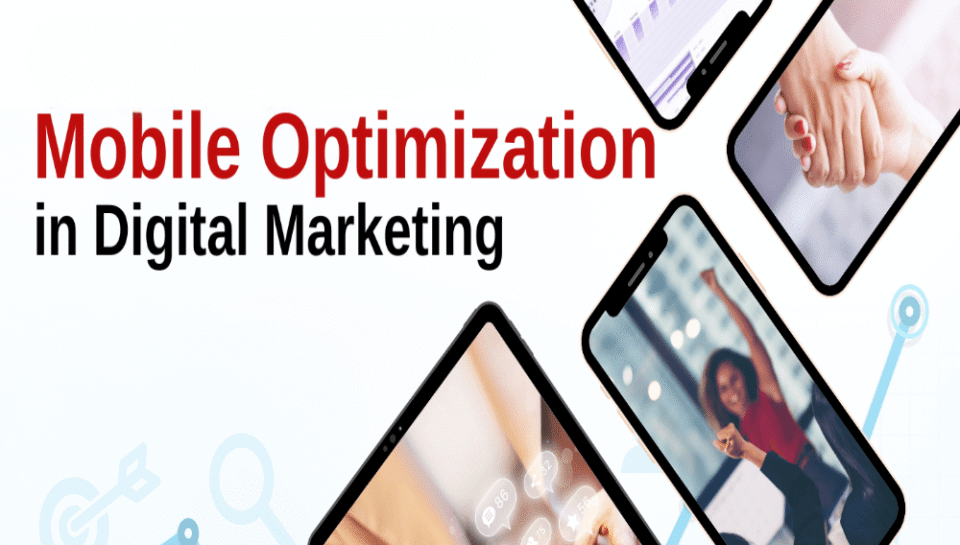
Describe mobile optimization in digital marketing efforts
Introduction
Mobile optimization has become a critical component of digital marketing, as users increasingly access websites, emails, and ads through smartphones and tablets. With mobile devices accounting for over half of global web traffic, businesses must ensure that their digital assets perform seamlessly on small screens. Mobile optimization refers to designing and formatting content so it is easily readable, fast-loading, and responsive on all mobile devices. In digital marketing, mobile optimization improves user experience, boosts engagement, enhances search rankings, and directly impacts conversion rates. It is no longer a luxury but a necessity for any business aiming to succeed in a mobile-first digital world.
Enhancing website responsiveness for better usability
Responsive web design is at the core of mobile optimization. It ensures that a website adjusts fluidly to different screen sizes and orientations. For digital marketers, a mobile-optimized website means better readability, easy navigation, and quicker access to key actions such as purchases, sign-ups, or downloads. Tools like Google’s Mobile-Friendly Test and responsive frameworks such as Bootstrap help developers ensure consistent experiences across all devices. A well-optimized mobile site reduces bounce rates and increases the likelihood of user engagement.
Improving mobile page load speed
Page speed is a crucial mobile optimization metric, especially because mobile users expect fast access and have shorter attention spans. Slow-loading pages lead to higher bounce rates and lost opportunities. Marketers leverage tools like Google PageSpeed Insights, AMP (Accelerated Mobile Pages), and image compression techniques to improve mobile load times. A fast mobile site not only enhances user experience but also contributes to better SEO performance and higher conversion rates.
Optimizing content layout for mobile consumption
Mobile users interact with content differently than desktop users. Long paragraphs, dense visuals, and cluttered layouts can deter engagement. Mobile-optimized content includes concise headlines, scannable text, bullet points, and clear CTAs (calls-to-action). Videos and images should be formatted for quick load and easy viewing on smaller screens. Marketers focus on readability, accessibility, and intuitive structure to ensure that content delivers value without overwhelming the mobile user.
Mobile SEO strategies for higher search visibility
Search engines like Google prioritize mobile-first indexing, which means the mobile version of a site is considered the primary version for ranking. Therefore, mobile SEO is a vital aspect of digital marketing. This includes optimizing metadata, using structured data, ensuring crawlability, and minimizing intrusive interstitials. Digital marketers also focus on local SEO elements such as “near me” queries and location-based keywords, as mobile users often search for nearby services or products.
Designing mobile-friendly email campaigns
Email marketing remains one of the most effective channels, but its success now hinges on mobile optimization. Emails must be responsive, with single-column layouts, large buttons, and legible font sizes. Subject lines and preview texts are optimized for mobile inbox display. Platforms like Mailchimp and Campaign Monitor offer mobile previews and templates to ensure consistent performance. A well-optimized mobile email campaign leads to higher open rates, click-through rates, and conversions.
Creating mobile-optimized landing pages
Landing pages designed for mobile traffic must load quickly, minimize distractions, and focus on one clear action. These pages often support digital ads, email links, or social media campaigns. Mobile landing pages require simplified forms, intuitive layout, and mobile-first design principles. A/B testing is frequently used to test button placement, content length, and images to enhance performance. Mobile-friendly landing pages are essential for capturing leads and driving sales in mobile campaigns.
Leveraging mobile advertising platforms
Mobile advertising includes display ads, in-app ads, social media promotions, and SMS marketing. Platforms like Google Ads, Facebook Ads, and TikTok for Business provide tools specifically for mobile campaigns. Marketers use geo-targeting, device segmentation, and time-based scheduling to reach users when they are most active. Mobile ads are optimized for vertical orientation and fast interaction. Creative formats like carousels, stories, and short-form videos enhance engagement and brand recall.
Implementing mobile analytics for performance tracking
Understanding how users interact with mobile content is key to ongoing optimization. Tools like Google Analytics, Firebase, and Mixpanel provide insights into mobile behavior such as session duration, exit rates, tap paths, and screen flow. These metrics help marketers refine strategies, identify drop-off points, and personalize experiences. Mobile analytics also inform budget allocation and campaign refinement, ensuring digital efforts are aligned with user behavior.
Integrating voice search and mobile behaviors
Voice search is growing rapidly, especially on mobile devices and smart assistants. Digital marketers are optimizing content for conversational queries, natural language, and long-tail keywords. Mobile users frequently use voice search for quick, location-based questions or transactional actions. Businesses that integrate voice optimization gain a competitive edge in mobile visibility and user engagement. Combined with mobile browsing patterns, voice trends shape future content and SEO strategies.
Conclusion
Mobile optimization is a strategic necessity in modern digital marketing. From responsive design and fast-loading pages to mobile SEO and email formatting, every aspect of the digital experience must cater to mobile users. As mobile traffic continues to dominate, businesses that invest in mobile-first strategies see better engagement, higher conversions, and improved customer satisfaction. Mobile optimization not only supports accessibility and usability but also strengthens a brand’s digital presence in a competitive market. Ensuring seamless mobile experiences enables marketers to meet users where they are, deliver relevant content, and drive impactful results.
Hashtags
#mobileoptimization #digitalmarketing #responsivewebdesign #mobileseo #mobilefirst #mobilefriendly #pagespeed #mobileads #emailmarketing #mobileux #mobilestrategy #mobileanalytics #mobilecontent #mobileadsuccess #seooptimization #userexperience #mobilewebsite #voiceoptimization #mobiledesign #smartphoneusers #mobileleadgen #conversionoptimization #mobilelandingpage #mobilesearch #digitalstrategy





